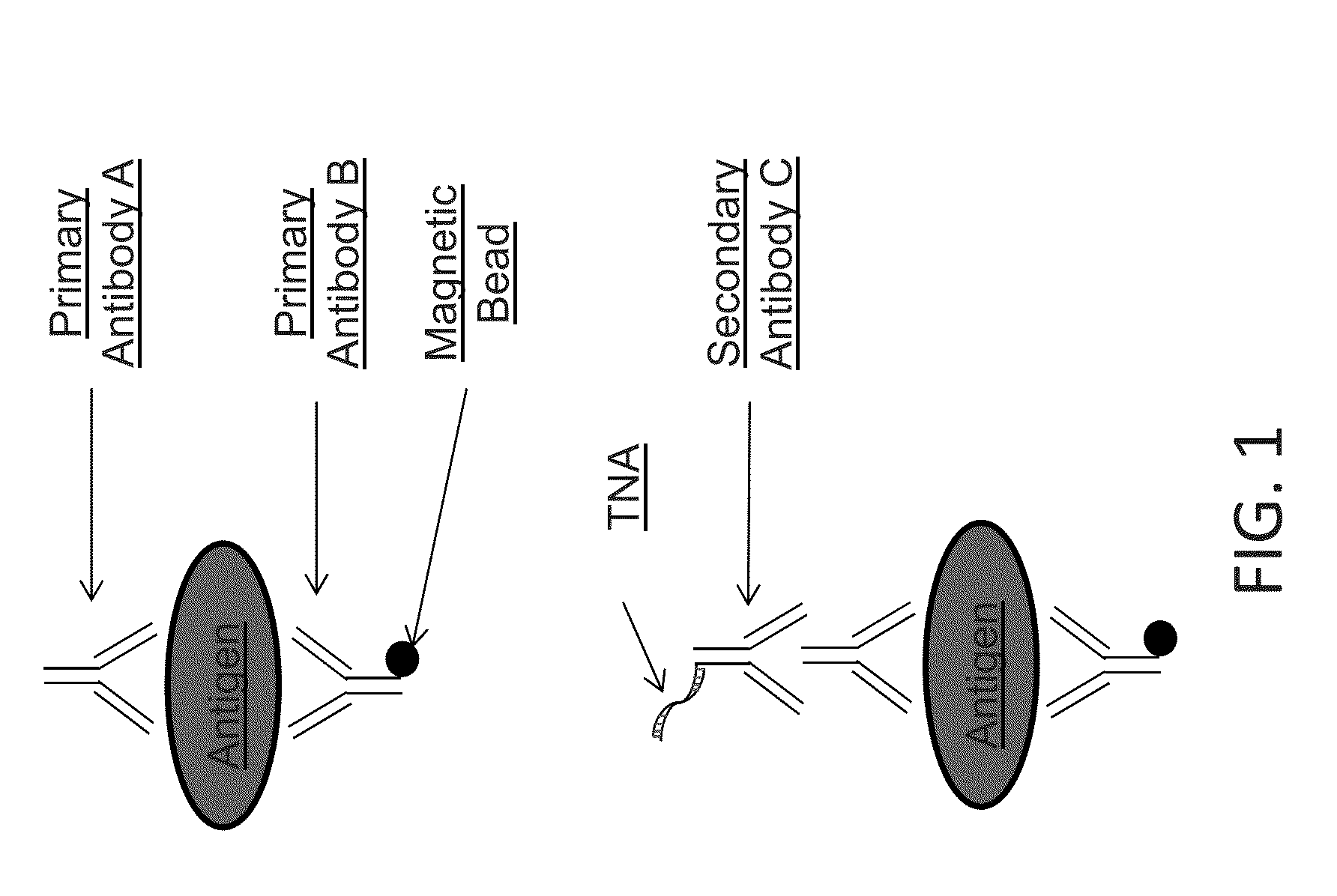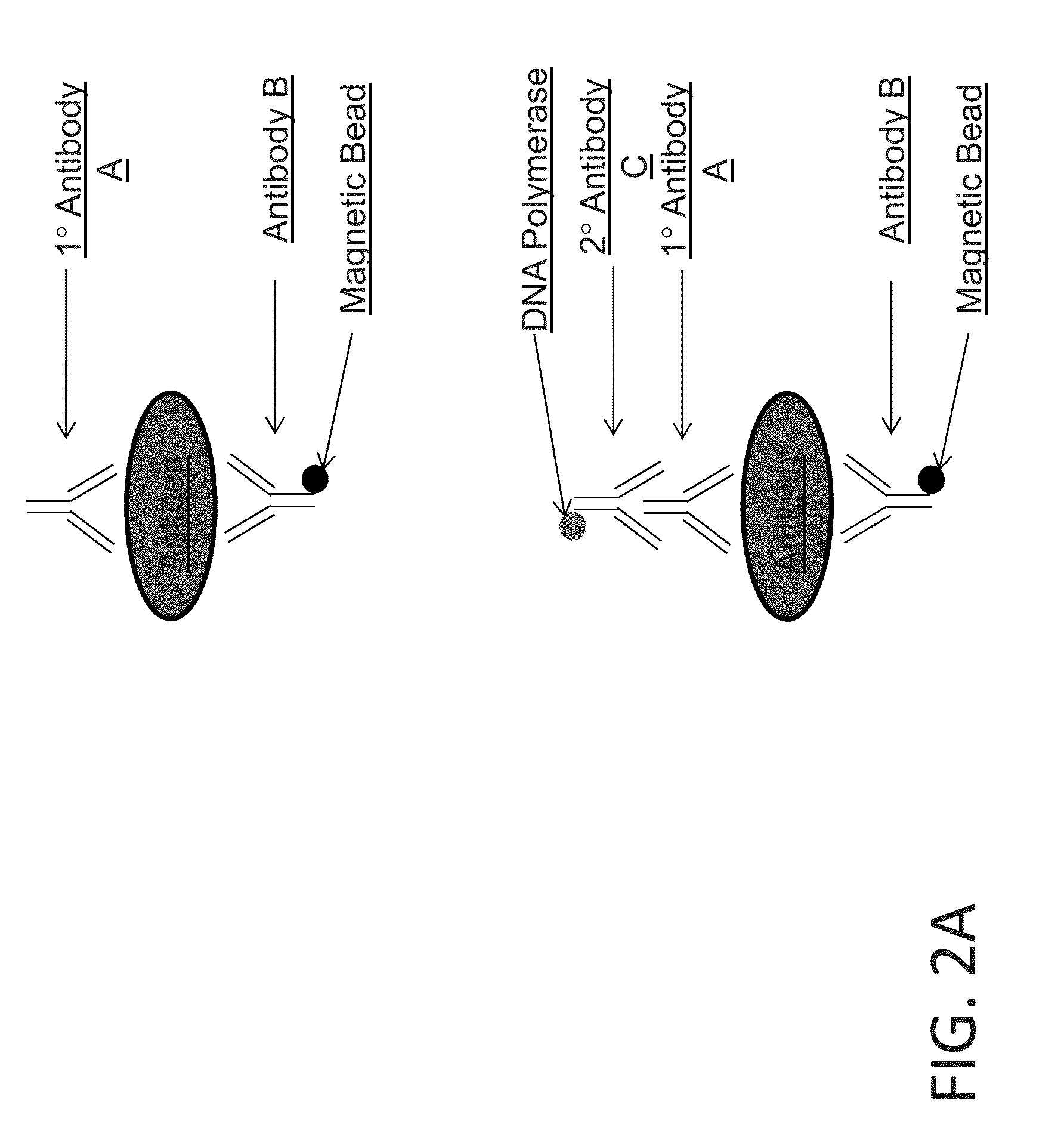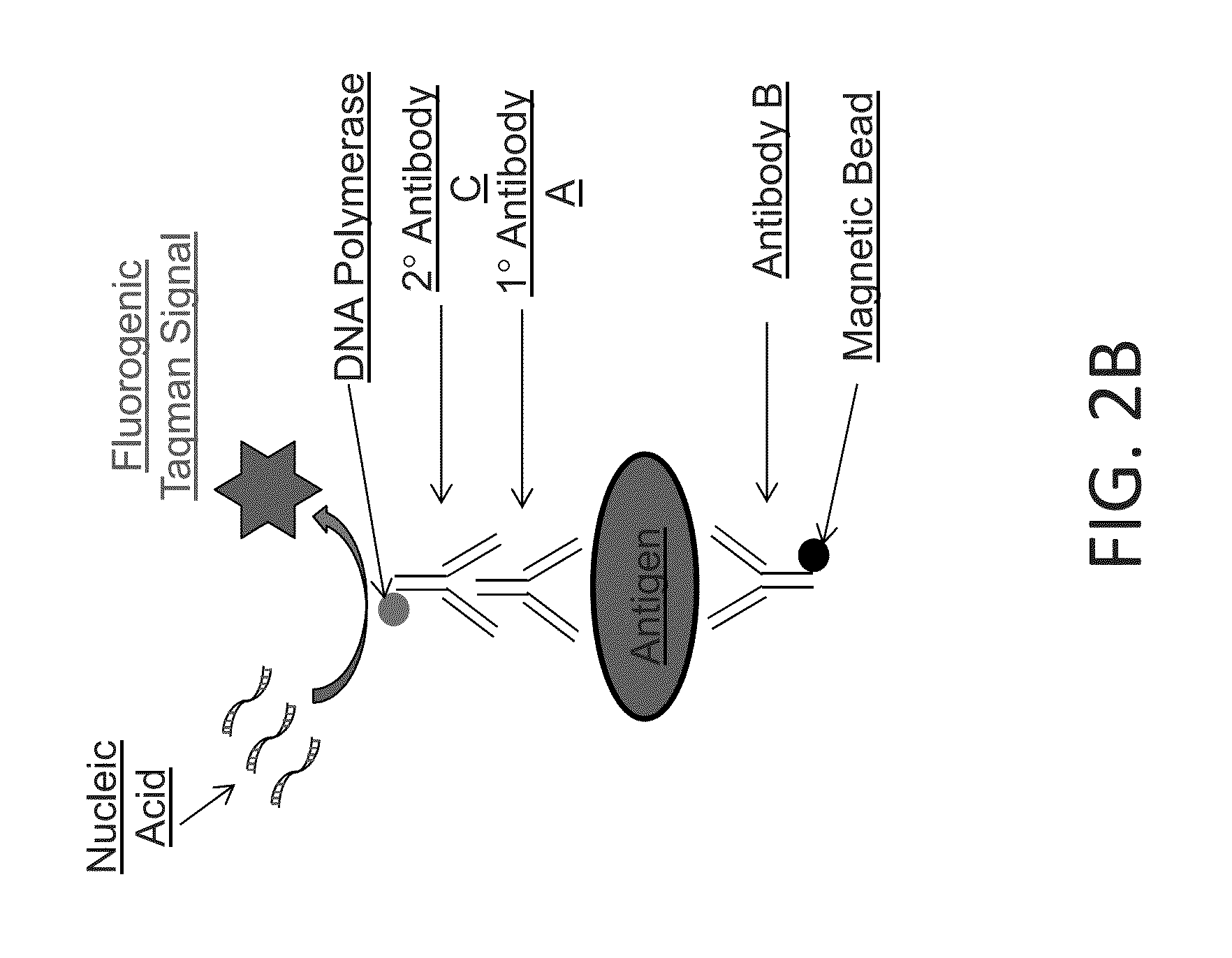Magnetic immuno digital PCR assay
- Summary
- Abstract
- Description
- Claims
- Application Information
AI Technical Summary
Benefits of technology
Problems solved by technology
Method used
Image
Examples
example 1
Scheme 1 for Detecting an Antigen
[0150]This example demonstrates detecting an antigen of interest using two primary affinity agents (e.g., antibodies), each of which specifically binds to the antigen. A sample is contacted with primary antibody A and primary antibody B. Antibody B has a magnetic bead covalently attached. Following incubation with antibodies A and B, the sample is contacted with a secondary antibody C that is labeled with a tagged nucleic acid (“TNA”). The antigen-primary antibody-secondary antibody-TNA complex is purified from free primary antibody A and secondary antibody C by magnetic separation with washing, then the purified complex is resuspended and captured in droplets. Droplet digital PCR is performed to detect the presence of the TNA label and / or quantify the amount of TNA label in each droplet. Detection and / or quantification of the antigen is then determined by mathematical conversion of the signal from the label to the number of antigens. See FIG. 1.
example 2
Scheme 2 for Detecting an Antigen
[0151]This example demonstrates detecting an antigen using two primary affinity agents (e.g., antibodies), each of which specifically binds to the antigen. In this scheme, an enzyme-linked secondary antibody is added that converts a substrate into a detectable form for detecting the presence of the antigen. A sample is contacted with primary antibody A and primary antibody B. Antibody B has a magnetic bead covalently attached. Following incubation with antibodies A and B, the sample is contacted with a secondary antibody C that binds specifically to antibody A. The secondary antibody C is coupled to a DNA polymerase such as Taq, Fast Start Taq, or some other polymerase (e.g., a mutagenized or variant DNA polymerase with desired properties for the application) or to another enzyme (FIG. 2A). The antigen-primary antibody-secondary antibody-DNA polymerase complex is purified from free primary and secondary antibodies by magnetic separation with washing,...
example 3
Scheme 3 for Detecting an Antigen
[0152]This example demonstrates detecting an antigen of interest using two primary affinity agents (e.g., antibodies), each of which specifically binds to the antigen. A sample is contacted with primary antibody A and primary antibody B. Antibody B has a magnetic bead covalently attached. Following incubation with antibodies A and B, the sample is contacted with a secondary antibody C that is labeled with a fluorophore. The antigen-primary antibody-secondary antibody-fluorophore complex is purified from free primary antibody A and secondary antibody C by magnetic separation with washing, then the purified complex is resuspended and captured in droplets. The fluorescent signal generated by the fluorophore label is detected according to any method described herein. Detection and / or quantification of the antigen is then determined by mathematical conversion of the signal from the label to the number of antigens. See FIG. 4.
PUM
| Property | Measurement | Unit |
|---|---|---|
| Magnetism | aaaaa | aaaaa |
| Affinity | aaaaa | aaaaa |
Abstract
Description
Claims
Application Information
 Login to View More
Login to View More - R&D
- Intellectual Property
- Life Sciences
- Materials
- Tech Scout
- Unparalleled Data Quality
- Higher Quality Content
- 60% Fewer Hallucinations
Browse by: Latest US Patents, China's latest patents, Technical Efficacy Thesaurus, Application Domain, Technology Topic, Popular Technical Reports.
© 2025 PatSnap. All rights reserved.Legal|Privacy policy|Modern Slavery Act Transparency Statement|Sitemap|About US| Contact US: help@patsnap.com



